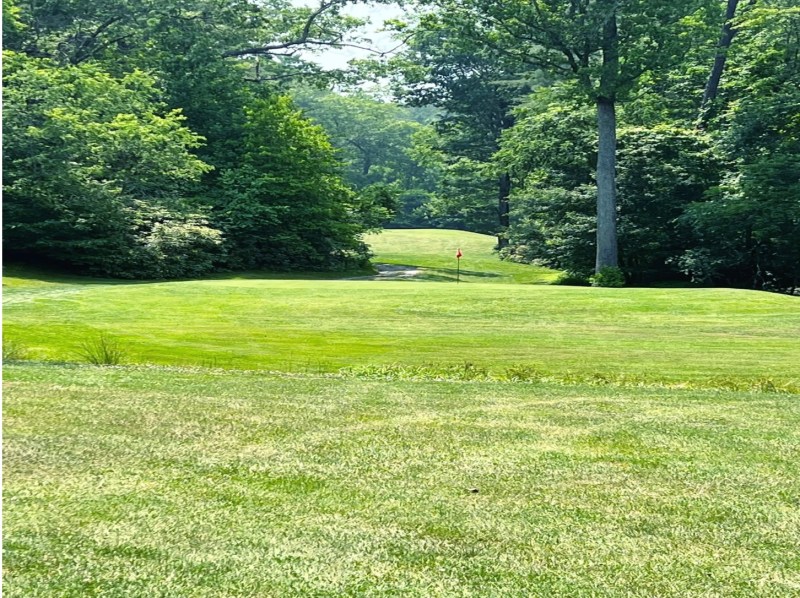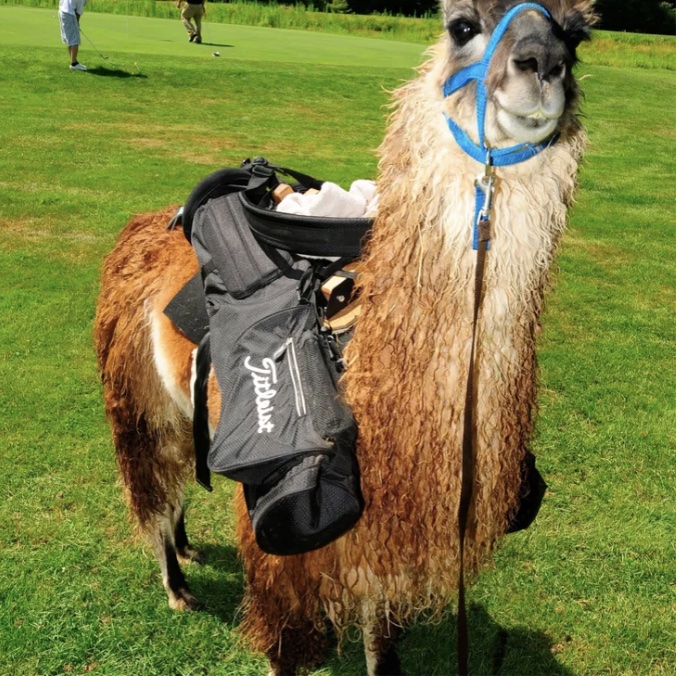Imagine your perfect golf outing. The sun is shining. The temps are ideal — warm and comfortable, with a mild breeze to cool you off, but it’s not strong enough to affect your fade vs. draw decisions.
You even have a special caddy for this one. You’re not going to get much in the way of club advice, though, because your caddy is one of those strong, silent types. Stocky build, stands close to six feet tall, and those back legs can deliver a heck of a kick if this particular caddy feels uncomfortable or threatened.
Wait, what? Back legs?? What exactly are we talking about here?
Why llamas and golf are a good match

Welcome to the world of llama golf, which is the latest effort to put a unique spin on your golf outing. Actually, though, “latest” is a misnomer, as llamas have been serving as caddies for quite a while. Which make sense given that they’re reasonably placid pack animals that have been used to carry heavy loads in the Andes for centuries.
Their role in the golf world is more limited, however. At the moment there are only two courses in the US where you can have this unique llama caddy experience—the Sherwood Forest Golf Club in Brevard, North Carolina, and Mountain View Grand Resort Spa in Whitfield, New Hampshire.
The llamas come with names like Elmer and Yowie, and you’ll be accompanied by a handler who knows the ins and outs of llama management. The Mountain View Grand Resort Spa llama experience even comes with in-course beverage service, so you can celebrate your successes or drown your sorrows if you’re spraying the ball all over the course. As far as your caddy goes, though, most of this will likely feel like a good walk, unspoiled.
The history behind llama caddies

While the uniqueness of golfing with llamas is special, the history is just as amazing. The Talamore Golf Resort wasn’t the first to offer llama golf, but they were the most noteworthy. The course itself has a lot of history, including a hole designed by none other than Jack Nicklaus, but it’s the llamas that add a wacky element.
There are a lot of great golf courses in North Carolina, and when Talamore opened back in 1991, the resort owners were looking to find ways to separate the course from the pack. Talamore was designed by the legendary Rees Jones, but the owners still felt like they needed a gimmick.
The first experiment involved donkeys. Back in the 70s, a resort in Mexico offered a round of golf using a donkey to carry the bags back, an experience that drew the attention of Golf Digest. Donkeys can be a bit stubborn, though, so after consulting with a livestock expert, llamas became the next club out of the bag, so to speak.
The experiment worked, largely due to a flood of articles like this one, and the folks at Talamore found their niche. The llamas were eventually put out to pasture because they proved to be too much of a distraction, but they’re still grazing out by the 13th green, and visitors often pause their round to have their pictures taken with the course’s famous denizens in the background.
The llama logo got the attention of Augusta National

One of the best stories about llama caddies off the course involves the Talamore logo, which featured the outline of a llama in a yellow and green pattern that happened to match that of Augusta National, where the Masters is held in April.
Not surprisingly, the folks at Augusta took umbrage. This sparked a cease-and-desist letter to the owners of Talamore, who still display that llama logo in their gift shop, where it’s become a merchandising gold mine.
The llama golf experience

As you might expect, the llama golf experience is very different in the two states where it’s offered. Mountain View Grand is a full-blown resort and spa that offers a complete vacation experience, with the golf billed as a “Llama Tee Time Trek” that goes for $150.
At Sherwood Forest Golf Club, however, the experience is decidedly more casual. The course is a shorter, more rustic par three, and when Sherwood club pro Brian Lauenschlager first arrived in 2008, he occasionally found himself interrupting golf lessons to chase rogue lamas off the practice green. Owner Mark English, who’s described himself as a “llama ambassador,” is still listed as the person to contact to book a round accompanied by a furry, four-footed caddy.



